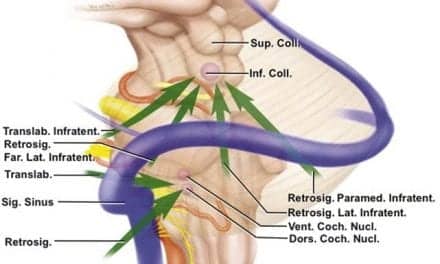Researchers from Monash University, Australia, used a non-invasive technique to map the connectivity of language regions of the brains of infants, paving the way for new diagnostic techniques for hearing difficulties.
Difficulties with hearing can affect children’s ability to develop language and speech skills. Several diagnostic tests are required to determine the extent of hearing challenges in infants, leading to delays. Now, researchers from Australia have conducted non-invasive measurements of the brain activity of infants, to map the changes in connectivity between different language areas over time. Their findings could pave the way for novel biomarkers and improved diagnostic tools for infants with hearing problems.
The human brain is comprised of several connected networks that work in synchronization to perform everyday tasks, including speech and language processing. In the initial stages of life, children develop speech and language skills through sensory functions, such as hearing. Most studies indicate that networks in the brain mature during childhood, facilitating the early development of language areas. Unfortunately, for children with hearing difficulties (which can be due to several factors like congenital defects, injuries, and disease, among others), this development can be hindered owing to reduced auditory inputs.
Further reading: Baby Talk Helps Infants Learn to Produce Speech
Diagnosing issues with hearing in infants is challenging. Physicians usually need to run multiple diagnostic tests to estimate the level of hearing difficulty in infants and determine whether they need a cochlear implant or a hearing aid. This is highly stressful, not only for the children but also for their parents. More concerning is the fact that prolonged hearing loss can severely affect how the brain’s language areas evolve, delaying a child’s ability to develop speech and language.
Studying Infant Hearing Challenges
Could studying the functional connectivity changes that occur in the brains of infants with healthy hearing help establish the typical developmental trajectory of language areas in early childhood? This question motivated PhD student Ishara Paranawithana, from Monash University, and his team of researchers from Australia, to explore how different language areas in the brain develop and interconnect over time as an infant grows older. This paper was made available online on February 24, 2023, and was published in Volume 20, Number 1 in the Journal of Neural Engineering on August 1, 2023.
To maximize the impact of these important findings, Paranawithana and colleagues published this study through a transformative agreement between IOP Publishing and the Council of Australian University Librarians (CAUL). This agreement allows authors at more than 30 institutions across Australia and New Zealand to publish their work open access at no cost to them. These articles are immediately available and free for everyone to access.
“I am a great advocate for open science, which promotes sustainable and equitable access of scientific research to anyone who might be interested,” says Paranawithana. “By publishing under a transformative agreement, we hoped to make our research findings readily accessible to a much wider brain research community, regardless of their ability to afford high subscription fees. This publication model is a great way to further our understanding on niche research topics while promoting diversity, inclusion, and equity more broadly in scientific research.”
In the study, the team recruited 26 infants between 2 and 13 months of age, as well as 12 adults with healthy hearing. Using a technique known as functional near-infrared spectroscopy, they non-invasively imaged the brains of all participants. The team then conducted data processing and statistical analyses to obtain a measure of the connectivity between distinct language areas in each individual’s brain. Since the age of the infants varied considerably, this led to the quantification of how these regions become increasingly functionally linked together with age, approaching the connectivity levels seen in adults by the end of the first year.
How are these findings beneficial in the long run? “Mapping out the developmental trajectory of language areas of normal hearing infants could potentially allow us to better understand the altered connectivity and its effects on language delays in hearing impaired infants,” says Paranawithana. He further adds, “Such tools will allow clinicians to conduct more accurate hearing assessments so that an appropriate hearing device can be confidently selected and fine-tuned to optimize the outcome of each patient.”
This study is a stepping stone toward new diagnostic methodologies that could revolutionize how physicians assess hearing in babies. Techniques such as functional near-infrared spectroscopy, which are relatively inexpensive and child-friendly, could ensure that infants with impaired hearing get access to effective treatments earlier in life.
Find out about the transformative agreement between IOP Publishing and the Council of Australian University Librarians (CAUL) at https://info.ioppublishing.org/CAULOpenAccess
Photo: Dreamstime





